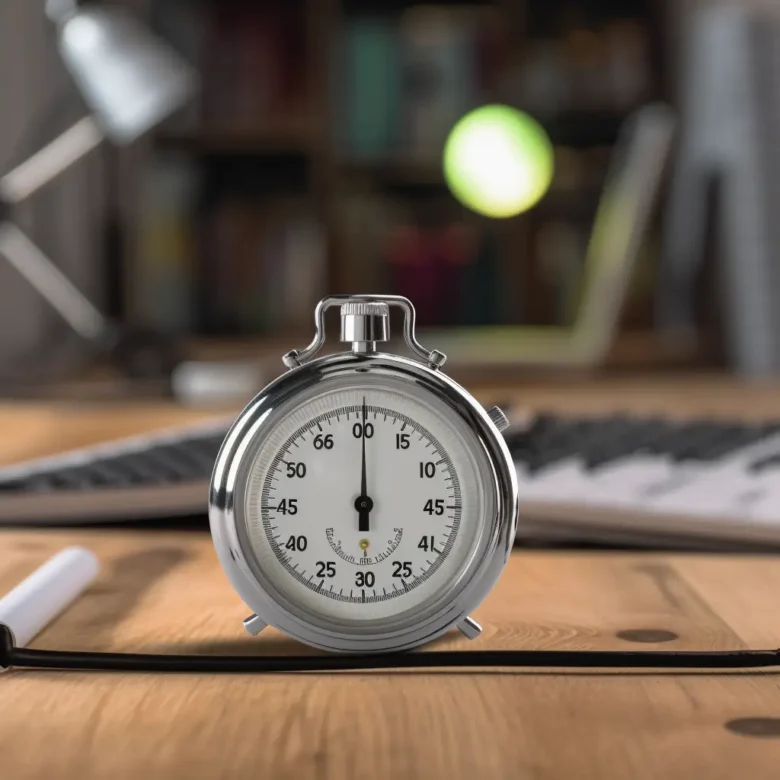In the ever-evolving landscape of productivity, individuals and professionals alike are constantly seeking ways to maximize their efficiency. One of the age-old debates in this realm revolves around the use of countdown timers and stopwatches. Which tool is more effective in helping us stay on track and complete tasks with precision? In this comprehensive guide, we delve into the science of productivity, comparing countdown timers and stopwatches to determine their strengths, weaknesses, and the ideal scenarios for each.
Countdown Timers: A Race Against Time
Countdown Timers vs. Stopwatches: Understanding the Basics
Countdown timers are versatile tools that allow users to set a predefined amount of time to complete a task. As the clock ticks down, there is a subtle but powerful psychological pressure to finish within the allocated time. This sense of urgency can be a powerful motivator, driving individuals to stay focused and work efficiently.
The Psychology Behind Countdown Timers
Countdown timers leverage the principles of time pressure and the “Zeigarnik Effect.” This psychological phenomenon suggests that people tend to remember and complete tasks better when they are interrupted or faced with a looming deadline. Countdown timers create precisely this scenario, encouraging individuals to concentrate on the task at hand to meet their time-based goals.
Applications of Countdown Timers
- Time-Blocking: Countdown timers are ideal for time-blocking techniques, allowing individuals to allocate specific time intervals for different tasks throughout the day. This structured approach enhances productivity by reducing multitasking and increasing focus.
- Interval Training: In the fitness world, countdown timers are frequently used for interval training. Athletes switch between high-intensity and low-intensity exercises based on timed intervals, optimizing their workouts for performance and results.
- Pomodoro Technique: The Pomodoro Technique, a popular time management method, relies heavily on countdown timers. Users work for a focused 25-minute interval, known as a “Pomodoro,” followed by a short break. This cycle promotes productivity while preventing burnout.
Stopwatches: Precision and Measurement
Countdown Timers vs. Stopwatches: The Stopwatch Advantage
Stopwatches, on the other hand, are synonymous with precision and measurement. They excel in scenarios where tracking time to the second is critical. Let’s explore the advantages of stopwatches.
Accurate Timing
Stopwatches provide precise timekeeping, making them indispensable in fields such as sports, scientific experiments, and cooking. When accuracy matters, a stopwatch is the tool of choice.
Split Timing
One of the unique features of stopwatches is their ability to record split times. This is invaluable in sports, where athletes need to monitor their performance during specific segments of an event.
Professional Applications
Stopwatches find extensive use in professional domains like medicine, where accurate measurement of time is crucial during surgeries, and in aviation, where precise timing is essential for navigation and coordination.
Countdown Timers vs. Stopwatches: Which Is Right for You?
Choosing between countdown timers and stopwatches ultimately depends on the nature of the task and your specific goals. To simplify the decision-making process, let’s summarize their best use cases in a table:
| Scenario | Countdown Timer | Stopwatch |
|---|---|---|
| Task Duration Control | Ideal for setting time limits on tasks, promoting focus and urgency. | Not suitable for setting time limits; better for measuring precise time intervals. |
| Time-Blocking | Effective for time management techniques like the Pomodoro method. | Not designed for time-blocking. |
| Interval Training | Great for workouts involving alternating high and low-intensity phases. | Not designed for interval training. |
| Precision Measurement | Less accurate for measuring exact seconds and milliseconds. | Exceptionally accurate for precise timing requirements. |
| Split Timing | Not suitable for recording split times. | Excellent for recording split times in sports and other activities. |
| Professional Use Cases | Versatile tool for general time management. | Essential in fields requiring precise time measurement, such as medicine and aviation. |



